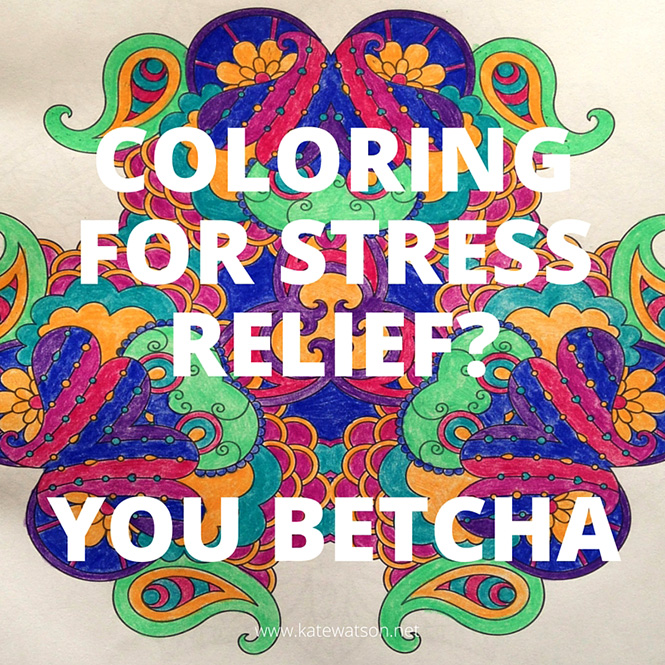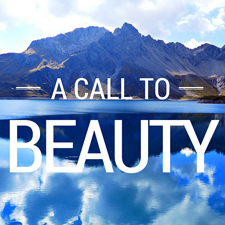Last year for my birthday, my mother-in-law gave me a coloring book and some markers. Little did she know, it was a perfect gift! In fact, I was already hooked by the adult coloring craze, and had downloaded some blank mandalas online and purchased a set of fancy colored pencils from Amazon.
What I’ve discovered is that coloring is a lovely, ease-filled de-stressor.

Here’s an example: I was feeling creatively uninspired the other day. I had not practiced adequate self-care due to my busy schedule and, frankly, I was feeling grumpy and, dare I say, petulant. I knew I had to do something to improve my mood, but nothing inspired me.
I considered painting, but setting up my watercolors seemed hard.
I looked toward my journal, but my standard stream-of-consciousness journaling practice didn’t rev my engine.
I then glanced at my bookshelf and saw a coloring book and pencils. That seemed possible, even easy. And it was. All I had to do was select a few colors and start filling in empty spaces.
Coloring has become a new form of meditation and mindfulness training for me. Lately, I haven’t been able to sit for 10-15 minutes in traditional meditation; the most I can manage is about 3 minutes and sometimes even that seems impossible.
When I turn to my coloring books, I am able to concentrate on a simple, enjoyable task for 15-30 minutes, calm my monkey mind, and refresh my creativity and spirit.
There is a reason this works. As clinical psychologist Ben Michaelis explains, “There is a long history of people coloring for mental health reasons. Carl Jung used to try to get his patients to color in mandalas at the turn of the last century, as a way of getting people to focus and to allow the subconscious to let go. Now we know it has a lot of other stress-busting qualities as well.”
I’ve written about the benefits of having a creative outlet before, which include increased mindfulness, reduced stress, improved mood, and decreased risk of age-related decline. All that, from something so simple? Believe it.
What if you’re too busy to color? Well, studies have also shown that stepping away from a thorny problem and occupying your conscious mind with another activity increases the likelihood your unconscious mind will find a novel solution.
As psychologist Richard Wiseman writes in 59 Seconds: Change Your Life in Under a Minute, “Genuine creativity can come from spending just a few moments occupying your conscious mind, thus preventing it from interfering with the important and innovative activity in your unconscious.”
So, while coloring may at first appear unproductive, it can actually be quite helpful in boosting your ability to solve problems along with a whole host of other health benefits.
If you’re new to this and feeling a bit silly, Dr. Michaelis writes, “Try thinking of coloring like you might think about eating your vegetables: just one is not going to kill you, and who knows, you might actually like it!”
I also know that sometimes the burden of choice can be an impediment to starting so, to avoid any analysis paralysis, here are the colored pencils and books I use, along with some free coloring resources:
- Prismacolor Colored Pencils
- Coloring Meditation, 64 Mandalas Against Stress
- Animal Kingdom: Color Me, Draw Me by Millie Marotta
- Secret Garden by Johanna Basford (the originator of the craze)
- 29 Free, Printable Mandala & Abstract Colouring Pages For Meditation & Stress Relief
- More free mandala coloring pages
And if you’re feeling a bit uncertain about adopting what was a child’s pastime now that you’re an adult, don’t take my word for it. Check out:
- Why Coloring Is Good for the Mind, Body, and Soul, by Ben Michaelis, PhD
- Why Coloring Could Be The New Alternative To Meditation, from Huffington Post
- Inside the Adult Coloring Craze, with Katie Couric
Like this post? Share it with a friend or leave a comment. And happy coloring!
Cheers,

















